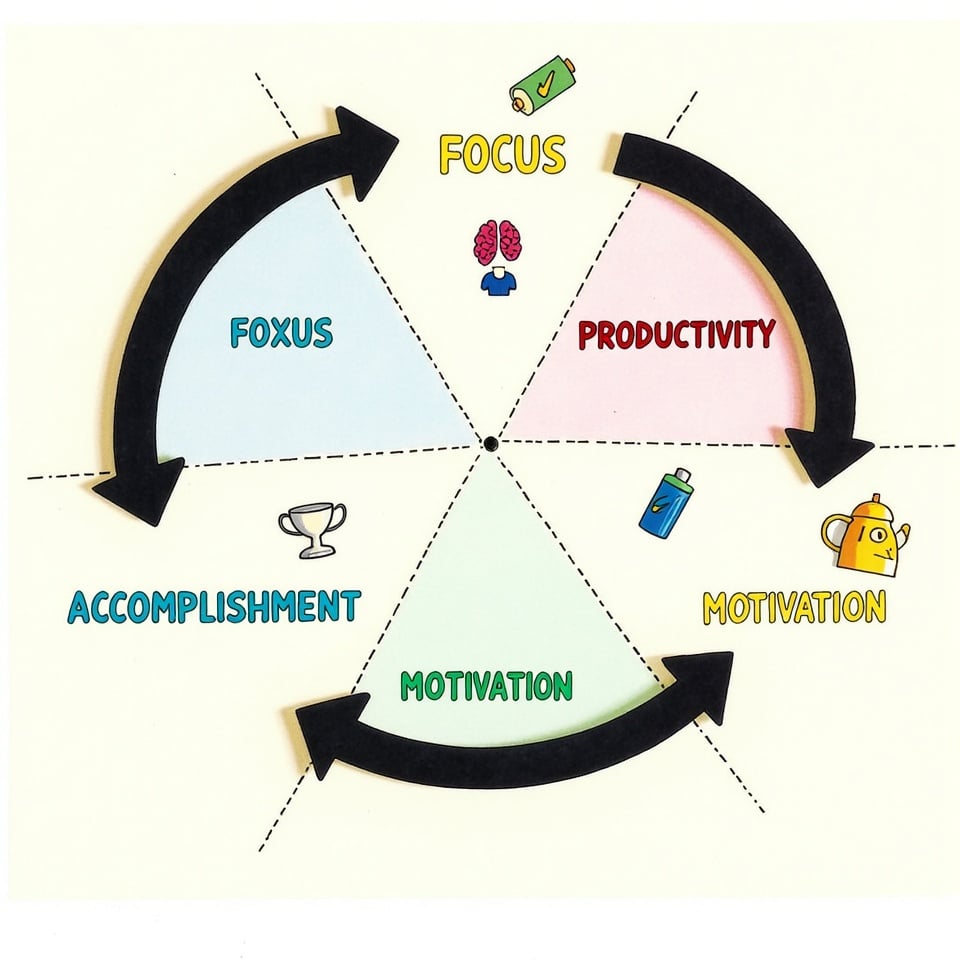Declarative sentences: the backbone of clear communication and effective information sharing. This comprehensive guide explores the structure, types, and impact of declarative sentences in both everyday language and formal discourse.
From simple statements to complex assertions, we’ll examine how these sentences convey facts, opinions, and observations across various contexts. Whether you’re a student, writer, educator, or language enthusiast, this guide will enhance your understanding and use of declarative sentences.
You’ll discover:
- What declarative sentences are and their fundamental structure
- Examples of declarative sentences in everyday language
- How declarative sentences differ from other sentence types
- Common uses of declarative sentences in various contexts
By the end of this guide, you’ll be equipped to create declarative sentences that inform, describe, and assert with clarity and precision.
Table of Contents
Ready to master the art of making clear, effective statements?
Let’s dive into the world of declarative sentences!
What is a declarative sentence?
A declarative sentence is a fundamental type of sentence structure in English that serves to make a statement or convey information. It’s the most common sentence type used in everyday communication, writing, and formal discourse.
Declarative sentences typically follow a straightforward subject-verb-object pattern and end with a period. They can range from simple statements to complex ideas, but their primary purpose remains the same: to declare or assert something as fact or opinion.
For example:
- “The sun rises in the east.”
- “I enjoy reading mystery novels.”
- “Climate change is affecting global weather patterns.”
These sentences all make clear statements without asking questions, giving commands, or expressing strong emotions. They simply straightforwardly present information, which is the hallmark of declarative sentences.
Declarative sentences form the backbone of most written and spoken communication, allowing us to share knowledge, express thoughts, and describe the world around us clearly and directly.
Types of declarative sentences
Declarative sentences can be categorized into different types based on their structure and complexity.
Let’s explore three common types: simple declarative sentences, compound declarative sentences, and complex declarative sentences.
1. Simple declarative sentences
Simple declarative sentences are the most basic form of declarative sentences. They consist of a single independent clause containing a subject and a predicate.
Key features:
- Contains one subject and one predicate
- Expresses a complete thought
- Follows the basic subject-verb-object (SVO) structure
Examples:
a) “The cat sleeps on the couch.”
Subject (The cat) + Verb (sleeps) + Prepositional phrase (on the couch)
b) “Scientists discovered a new species.”
Subject (Scientists) + Verb (discovered) + Object (a new species)
c) “My brother plays the guitar.”
Subject (My brother) + Verb (plays) + Object (the guitar)
Simple declarative sentences can also include modifiers or complements to provide additional information:
d) “The old clock on the wall chimes every hour.”
Subject (The old clock) + Prepositional phrase (on the wall) + Verb (chimes) + Adverbial phrase (every hour)
2. Compound declarative sentences
Compound declarative sentences consist of two or more independent clauses joined together. Each clause could stand alone as a simple declarative sentence, but they are combined to show a relationship between the ideas.
Key features:
- Contains two or more independent clauses
- Clauses are typically joined by coordinating conjunctions (and, but, or, so, yet, for, nor) or semicolons
- Each clause has its subject and predicate
Examples:
a) “The sun was setting, and the birds were returning to their nests.”
Independent clause 1 + Coordinating conjunction (and) + Independent clause 2
b) “I wanted to go to the party, but I had to study for my exam.”
Independent clause 1 + Coordinating conjunction (but) + Independent clause 2
c) “The movie was excellent; the acting was superb.”
Independent clause 1 + Semicolon + Independent clause 2
Compound declarative sentences can also use correlative conjunctions:
d) “Not only did she win the race, but she also broke the record.”
Correlative conjunction (Not only…but also) connecting two independent clauses
3. Complex declarative sentence
Complex declarative sentences combine an independent clause with one or more dependent clauses to express more intricate ideas while maintaining a statement format.
Key features:
- Contains one independent clause and at least one dependent clause
- Dependent clauses are introduced by subordinating conjunctions or relative pronouns
- The independent clause can stand alone, while the dependent clause cannot
- Provides additional information or context to the main idea
Examples:
a) “Although it was raining, we decided to go for a walk.”
Dependent clause (introduced by “Although”) + Independent clause
b) “The book that I borrowed from the library is overdue.”
Independent clause + Dependent clause (introduced by “that”)
c) “When the alarm went off, Sarah realized she had overslept.”
Dependent clause (introduced by “When”) + Independent clause
Complex declarative sentences can also have multiple dependent clauses:
d) “While I was studying, which took several hours, my phone kept ringing.”
Dependent clause + Dependent clause (as an interruption) + Independent clause
These sentences allow for more sophisticated expression of ideas, showing relationships between concepts such as cause and effect, time sequences, or additional details about the subject.
Example of declarative sentences
Declarative sentences are ubiquitous in our daily communication and can be found in various contexts. Here are some examples to illustrate the versatility and range of declarative sentences:
Simple declarative sentences:
1. “The sky is blue.”
2. “Dogs bark.”
3. “Water boils at 100 degrees Celsius.”
These straightforward sentences convey basic facts or observations.
Compound declarative sentences:
4. “The movie was entertaining, but the book was better.”
5. “I like coffee, and my sister prefers tea.”
6. “The car wouldn’t start, so we took the bus.”
These sentences combine two independent clauses to express more complex ideas.
Complex declarative sentences:
7. “Although it was raining, we decided to go for a walk.”
8. “When the alarm went off, everyone evacuated the building.”
9. “The project that we’ve been working on for months is finally complete.”
These sentences include both independent and dependent clauses to convey more intricate relationships between ideas.
Declarative sentences in different tenses:
10. “I am studying for my exam.” (present continuous)
11. “She has lived in Paris for five years.” (present perfect)
12. “They will attend the conference next week.” (future simple)
These examples show how declarative sentences can express actions or states in various time frames.
Declarative sentences expressing opinions or beliefs:
13. “I believe that education is the key to success.”
14. “In my opinion, classical music is more relaxing than pop.”
15. “It seems that the economy is slowly improving.”
These sentences demonstrate how declarative sentences can be used to express subjective views or interpretations.
How to use declarative sentences
Using declarative sentences effectively is crucial for clear communication in both writing and speaking. Here’s a guide on how to use declarative sentences:
1. Convey Facts and Information
Use declarative sentences to present factual information or objective truths:
- “The Earth revolves around the Sun.”
- “Water freezes at 0 degrees Celsius.”
2. Express Opinions or Beliefs
State personal views or beliefs clearly:
- “I think renewable energy is the future of power generation.”
- “In my opinion, regular exercise is essential for good health.”
3. Describe Situations or Events
Paint a picture with words using descriptive declarative sentences:
- “The old oak tree stood tall at the edge of the field.”
- “The concert hall erupted in applause as the singer finished her performance.”
4. Make Assertions or Claims
Use declarative sentences to make strong statements or claims:
- “Our product is the most efficient on the market.”
- “This method will significantly improve productivity.”
5. Provide Explanations
Explain concepts or processes step by step:
- “Photosynthesis is the process by which plants convert sunlight into energy.”
- “The water cycle involves evaporation, condensation, and precipitation.”
6. Create Narrative Flow
In storytelling, use declarative sentences to move the plot forward:
- “Sarah opened the mysterious letter with trembling hands.”
- “The detective examined the crime scene carefully.”
7. Vary Sentence Length and Structure
Combine short and long declarative sentences to create rhythm in your writing:
- “The alarm sounded. Everyone rushed to the exits. The building was quickly evacuated, and the fire department arrived within minutes.”
8. Use in Academic and Professional Writing
Declarative sentences are essential in formal writing for presenting arguments and findings:
- “This study demonstrates a strong correlation between diet and heart health.”
- “The data suggests a significant increase in renewable energy adoption over the past decade.”
9. Enhance Clarity in Instructions or Directions
While imperative sentences are common for instructions, declarative sentences can provide additional clarity:
- “The next step involves mixing the ingredients thoroughly.”
- “Proper maintenance ensures the longevity of the equipment.”
10. Emphasize Important Points
Use declarative sentences to highlight key information:
- “It is crucial to note that these findings are preliminary.”
- “The most significant factor in the experiment was the temperature control.”
11. Combine with Other Sentence Types
While declarative sentences are versatile, combining them with other sentence types (interrogative, imperative, exclamatory) can create more engaging content:
- “The results were unexpected. What could have caused this anomaly? Further investigation is needed.”
Declarative sentences vs. interrogative sentences
Declarative and interrogative sentences serve distinct purposes in communication.
Declarative sentences make statements or convey information, typically following a subject-verb-object structure and ending with a period.
For example, “The concert starts at 8 PM.”
In contrast, interrogative sentences ask questions or seek information, often beginning with question words or auxiliary verbs and ending with a question mark.
For instance, “What time does the concert start?”
The key differences lie in their function, word order, and punctuation. Declarative sentences provide information (“The museum is closed on Mondays”), while interrogative sentences request it (“Is the museum open on Mondays?”).
In spoken language, declarative sentences usually have a falling intonation, whereas interrogative sentences have a rising intonation.
Declarative sentences are prevalent in expository writing and formal documents, while interrogative sentences are common in dialogues and for engaging readers.
Both types can vary in complexity and can be used rhetorically.
For example, a declarative sentence might assert, “Climate change is a global crisis,” while an interrogative sentence could provoke thought by asking, “How can we address the global crisis of climate change?”
Understanding these differences enables more effective and varied communication in both writing and speaking.
Declarative sentences vs. imperative sentences
Declarative and imperative sentences serve different functions in communication, each with its own distinct characteristics.
Declarative sentences make statements or convey information, typically following a subject-verb structure and ending with a period.
For example, “The door is locked.” Imperative sentences, on the other hand, give commands, instructions, or make requests, often starting with a verb and ending with a period or exclamation mark.
For instance, “Lock the door!”
The key differences lie in their purpose, structure, and tone.
Declarative sentences provide information or express opinions (“The meeting starts at 2 PM”), while imperative sentences direct action (“Be on time for the 2 PM meeting”).
Declarative sentences always include a subject, even if implied, whereas imperative sentences often have an implied subject (you). In terms of tone, declarative sentences are generally neutral or informative, while imperative sentences can range from polite requests to forceful commands.
Declarative sentences are common in most forms of writing and speech, while imperative sentences are frequently used in instructions, directions, and persuasive writing.
For example, a declarative sentence might state, “Regular exercise improves health,” while an imperative sentence would instruct, “Exercise regularly for better health!”
Declarative sentences vs. exclamatory sentences
Declarative and exclamatory sentences serve different purposes in communication, each with its unique characteristics.
Declarative sentences make statements or convey information in a neutral tone, typically ending with a period.
For example, “The sunset is beautiful.” Exclamatory sentences, on the other hand, express strong emotions or sudden feelings, ending with an exclamation mark.
For instance, “What a beautiful sunset!”
The key differences lie in their emotional intensity, punctuation, and structure. Declarative sentences present facts or opinions without particular emphasis (“The movie was interesting”), while exclamatory sentences convey heightened emotions or reactions (“That movie was incredible!”).
Declarative sentences maintain a consistent, often calm tone, whereas exclamatory sentences express excitement, surprise, anger, or other intense feelings.
In terms of structure, declarative sentences follow standard subject-verb order, while exclamatory sentences may begin with “what” or “how” and can sometimes use inverted word order for emphasis.
Declarative sentences are prevalent in most forms of writing and speech, particularly in formal or informative contexts. Exclamatory sentences, however, are more common in informal writing, dialogue, or expressive literature.
For example, a declarative sentence might state, “The team won the championship,” while an exclamatory sentence would emphasize the emotion: “We won the championship!”
Conclusion
Declarative sentences form the foundation of clear communication in English. These straightforward statements convey facts, opinions, and information without embellishment or strong emotion. By mastering declarative sentences, writers and speakers can effectively share ideas, describe situations, and assert truths.
Whether in academic writing, everyday conversation, or professional communication, the ability to craft concise, clear declarative sentences is essential. Understanding the distinction between declarative and other sentence types, such as exclamatory sentences, allows for more nuanced and purposeful expression.
Ultimately, declarative sentences serve as the building blocks for coherent, informative discourse across all forms of English language use.
Frequently asked questions
What is a declarative sentence?
A declarative sentence is a type of sentence that makes a statement or conveys information. It’s the most common sentence type in English. Declarative sentences typically:
- Follow a subject-verb structure
- End with a period
- State facts, opinions, or observations
- Have a neutral tone
What is an example of a declarative or assertive sentence?
Examples of declarative sentences include:
- The sky is blue.
- I like pizza.
- Cats make good pets.
- The movie starts at 8 PM.
- Paris is the capital of France.
These sentences all make straightforward statements without asking questions, giving commands, or expressing strong emotions.







